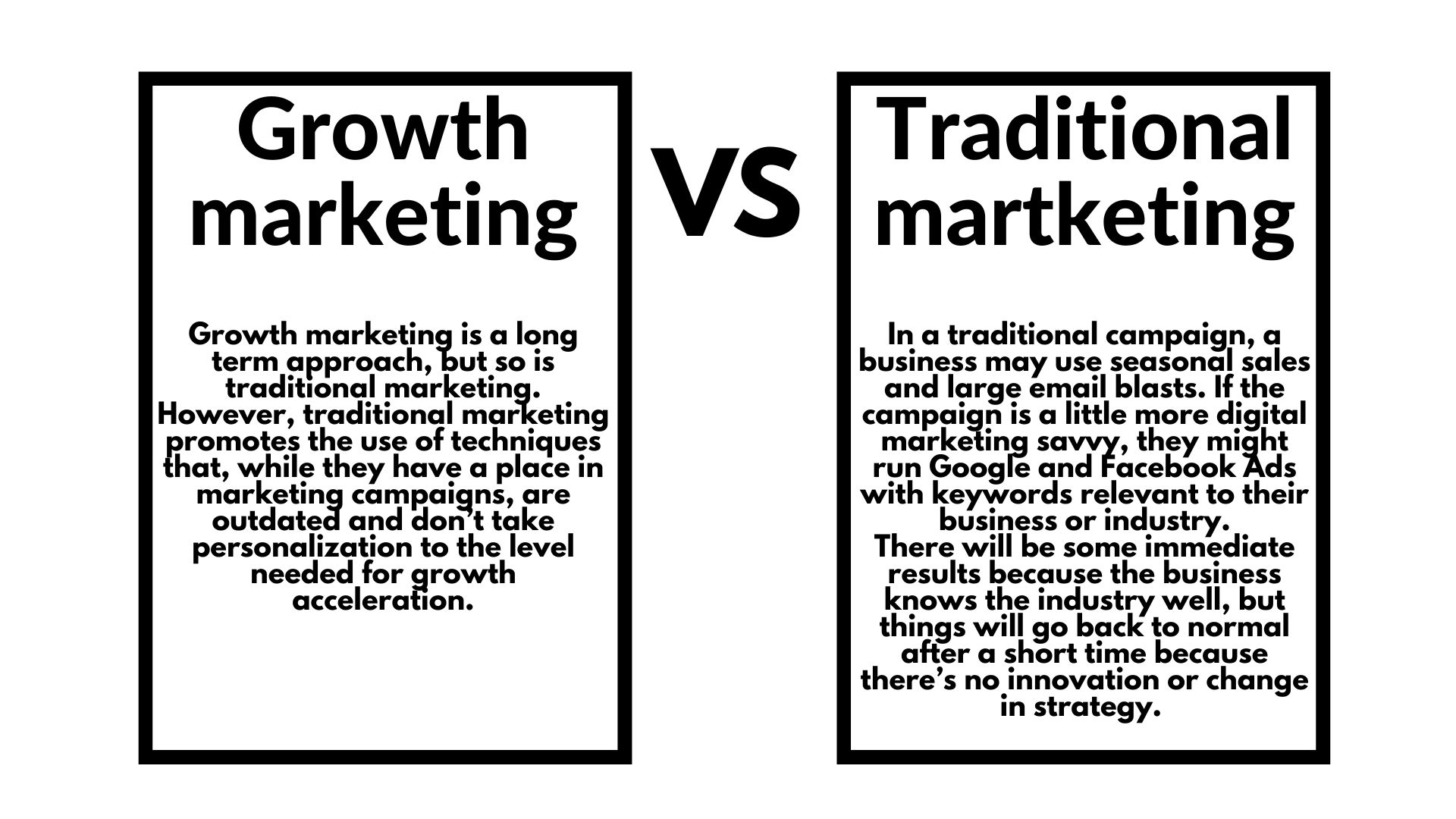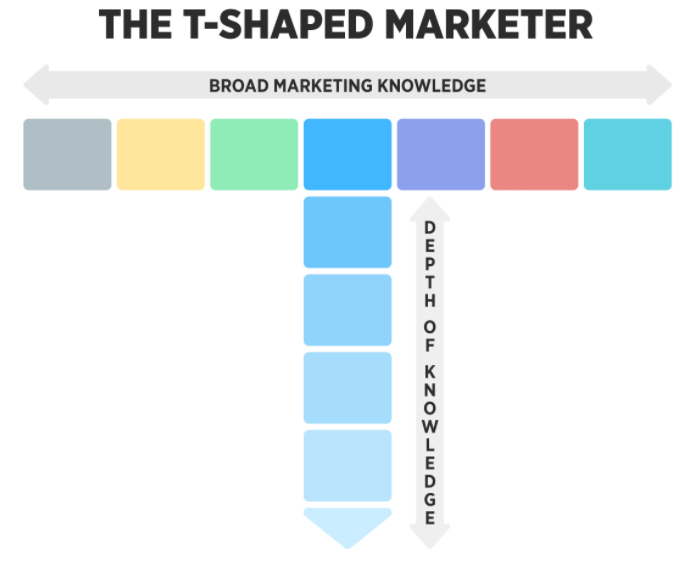Growth Marketing | What Is It and How Do You Use It?

In the marketing world, people throw terms around like ‘growth hacking’ and ‘growth marketing’ all the time. We discussed growth hacking in the past, but what about growth marketing? In this article, we’re talking about all things growth marketing—what it is and how to use it for your business.
What is growth marketing?
Growth marketing is a long-term marketing approach designed to engage, attract, and retain customers. It uses experimentation and has a focus on creating specific profiles of your customers and potential customers that consider their motives and preferences.
Growth marketing allows businesses to create personalized messaging on multiple channels from chatbots to social media to email campaigns and even blogs. On top of that, growth marketing tools can tell a business which channels or platforms are the best ones to use for their specific customer profiles.
It’s all about creating the ultimate customer experience so they not only come back but tell others about their positive buying journey.
What’s the difference between growth marketing and traditional marketing?

We’ve discussed the difference between growth marketing and growth hacking previously, so let’s look at how it relates to traditional marketing.
Growth marketing is a long term approach, but so is traditional marketing. However, traditional marketing promotes the use of techniques that, while they have a place in marketing campaigns, are outdated and don’t take personalization to the level needed for growth acceleration.
In a traditional campaign, a business may use seasonal sales and large email blasts. If the campaign is a little more digital marketing savvy, they might run Google and Facebook Ads with keywords relevant to their business or industry from a general sense—albeit, repeating the same keywords.
There will be some immediate results because the business knows the industry well, but things will go back to normal after a short time because there’s no innovation or change in strategy.
We can relate this strategy to a quote commonly—though incorrectly—attributed to Einstein: “The definition of insanity is doing the same thing over and over again and expecting different results.”
What does a growth marketer do?
For clarity, let’s view growth marketing as traditional marketing 2.0. Growth marketers incorporate growth hacking or hacks into their marketing strategy by experimenting with variables that reveal what causes growth in various channels and target audiences.
These experiments identify the steps a company should take to optimize their marketing budget. And for large enterprises, this can mean millions in savings or additional revenue.
Growth marketers are often called ‘T-shaped marketers’ because they’re knowledgeable in different facets of marketing. This means they create growth in a combination of areas like SEO and/or SEA, social media marketing, content marketing, or data analytics.
The term growth hacking came before growth marketing. So growth marketers often blend traditional marketing with modern digital marketing techniques, growth hacking and experimentation.
With that, let’s examine growth marketing further and breakdown the various strategies growth marketers use for businesses of all sizes.

What is a Marketing Growth Strategy?
Growth marketing strategies focus on continuous, sustainable growth of a brand as opposed to the rapid-quick growth focus of growth hacking. But remember that while sustainability may be a focus for growth marketing, growth hacks are not forgotten. Growth marketers are willing and actively use growth hacks and experiment with them for application to marketing campaigns and buyer journeys.
Technology advances quickly, so it’s a matter of incorporating new technologies like machine learning, big data, and A.I, etc. into more modern and sophisticated campaigns, especially for large enterprises. To achieve this goal, growth marketers experiment with different variables to answer questions like:
- Who is viewing the marketing content?
- When are they viewing it?
- Can any marketing personas be segmented?
- What channels are those segments viewing content on?
Answering those questions acts as a growth marketing canvas. And the strategy is to create highly personalized content that reaches each persona and individual on a personal level.
Also, from the data, marketers can monitor other behavioral aspects of personas to know what a customer wants before they know they want it, or even influence their behavior.
Growth marketers use data to build customized marketing strategies to optimize growth. But it doesn’t stop at growth. The idea is to engage with an audience continuously at that personal level to retain the customer for the long-term. With that type of growth and sustainability, companies can lower their lead and customer acquisition costs, increase revenue, and ultimately spend their marketing budget more efficiently.
Even more, the growth marketing strategy is to create even more value for your customers. And at that point, it isn’t all about Euros and cents. It’s about building a relationship that nurtures loyalty and advocacy. And that’s the bottom line for any customer’s CLV—customer lifetime value.
If your business isn’t using a modern growth marketing strategy, it may be time to start asking ‘why?’ And if you’re interested, let’s look at some key aspects of a digital marketing growth strategy.
Key Aspects of a Digital Marketing Growth Strategy
Digital growth marketing strategies consider many of the traditional marketing metrics like:
- Customer lifetime value
- Customer acquisition cost
- Lead generation cost
- Conversion rates
- Customer per acquisition
- Persona metrics
- Social media metrics
And within those metrics, that’s where growth markers can shine. So let’s look at some of the key aspects of a modern digital marketing strategy that can work businesses of any size.

Recognize and optimize your customer lifecycle
A customer lifecycle is a five-step process or journey where a prospective customer notices a product, makes a purchase, and becomes a longtime customer. The five steps include:
- Reach
- Acquisition
- Conversion
- Retention
- Loyalty
Growth marketers live and die by this cycle because every stage of the cycle has a role in the customer’s experience. Also, growth marketers design specific campaigns and experiment—more on that shortly—with different aspects of those individual campaigns to see what works best for the business at that time.
Without a customer lifecycle, there is no basis for a growth marketer to work from and the experimentation process becomes too broad and unfocused. In order to get specific data for specific metrics, there needs to be a lifecycle or journey.
Experiment with A/B Testing
A/B testing is the core of any growth marketing strategy. It’s also known as split testing, and it’s the process of comparing two versions of an email, landing page, or any other marketing asset and measuring their performance side-by-side.
Each test, or series of tests, helps you to understand which version of your marketing content is creating better engagement with your target audiences and netting more conversions.
For example, you can test two different subject lines within an email marketing campaign to see which email received a better response.
And from those variations, the goal is to get rid of what doesn’t work and keep what does to create fully optimized marketing campaigns that accelerate the growth of your company.
Growth marketing examples of A/B testing take things to the next level because of audience segmentation. Marketers focus on many customized segments specific to the campaign like demographics, preferences, purchase history, etc. And with every test and variation, marketers can come one step closer to knowing exactly what your target audiences want and how to engage them more effectively with every campaign.

Engage in Cross-channel marketing
Growth marketers use cross-channel marketing as a strategy to reach a wider audience. Any cross-channel strategy will include anything from messaging campaigns to email marketing.
The idea is to blend your channels together in a way that creates a step-by-step process for a potential customer to convert into a buyer and then into a long term customer. The various channels must work together and have context when they reach your different personas or target audiences. You want everything to make sense as they jump from one channel to another.
For example, if you gain a customer via a social media ad, you want the messaging on the landing page and on the follow up email to be uniform to their buyer persona. Integration of these multiple channels and experimenting with different variables within the campaigns is the core of growth marketing strategy.
Growth Marketing Tools or Marketing Tools for Business Growth
With a definition and strategy for growth marketing in place, let’s examine some common growth marketing tools. We also have a more complete list of growth marketing tools available.
Hubspot
Hubspot is a CRM that can help any large enterprise integrate the growth marketing strategies above. It’s an inbound marketing automation tool that assists with email campaigns, landing platforms and many other marketing assets on different channels. With Hubspot you can collect data and easily do A/B testing to see what’s working and what isn’t working with your marketing campaigns.
CrazyEgg
All enterprises must be able to measure their website’s performance in order to have successful growth marketing campaigns. CrazyEgg is a heat mapping tool that provides data for growth marketing teams to see where and how visitors are engaging on a website. With the data, growth marketers can conduct experiments and alter marketing strategies to optimize spending and maximize growth.
Looking for more Growth Marketing tools to boost your business growth?
Discover Growth Hacking tools used by the best digital marketing startups HERE!
What can growth marketing do for my enterprise?
If your company isn’t utilizing growth marketing, then there’s a problem. Large enterprises are taking advantage of the big data available and experimenting with various channels to optimize their marketing campaigns and maximize their revenue. Any company who isn’t on board will be left behind. The world has moved on to marketing 2.0, are you ready to take the next step with your company?
Even big enterprises sometimes need help with growth acceleration, and that’s where Upthrust can help. We’re a global digital acceleration office that can help your company implement growth marketing processes and train your teams on how to maximize their potential.
We accomplished specific and strategic growth marketing goals for companies like Multipharma, Torfs, and the Haacht Brewery and can do the same for your business.
Do you want to know how we can implement a growth marketing strategy for your business ? Plan a FREE strategic session HERE!
